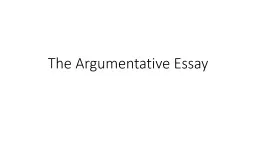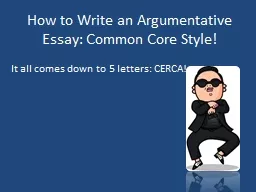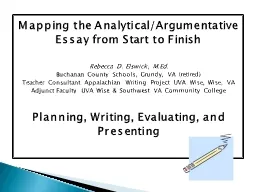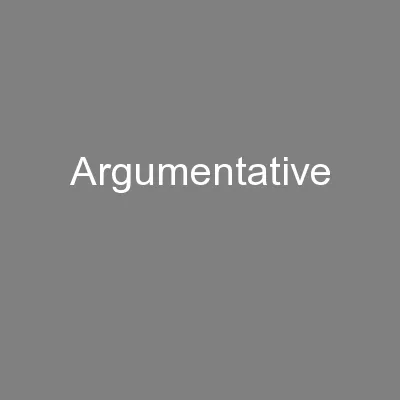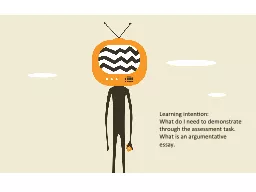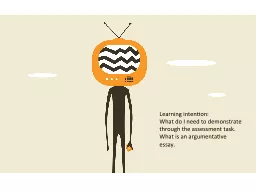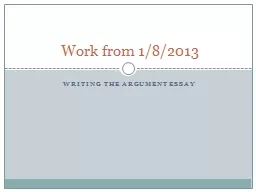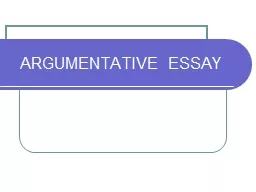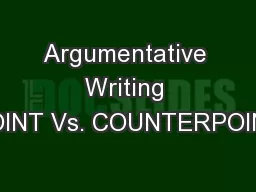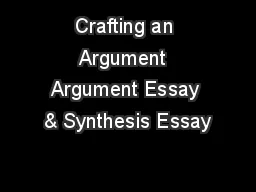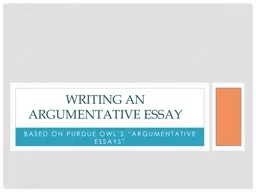PPT-The Argumentative Essay The Argument’s Best Friends
Author : dudeja | Published Date : 2020-08-05
Ethos Logos and Pathos Ethos Ethical This appeal involves convincing your audience that you are intelligent and can be trusted Writers cannot simply say to their
Presentation Embed Code
Download Presentation
Download Presentation The PPT/PDF document "The Argumentative Essay The Argument’s..." is the property of its rightful owner. Permission is granted to download and print the materials on this website for personal, non-commercial use only, and to display it on your personal computer provided you do not modify the materials and that you retain all copyright notices contained in the materials. By downloading content from our website, you accept the terms of this agreement.
The Argumentative Essay The Argument’s Best Friends: Transcript
Download Rules Of Document
"The Argumentative Essay The Argument’s Best Friends"The content belongs to its owner. You may download and print it for personal use, without modification, and keep all copyright notices. By downloading, you agree to these terms.
Related Documents

